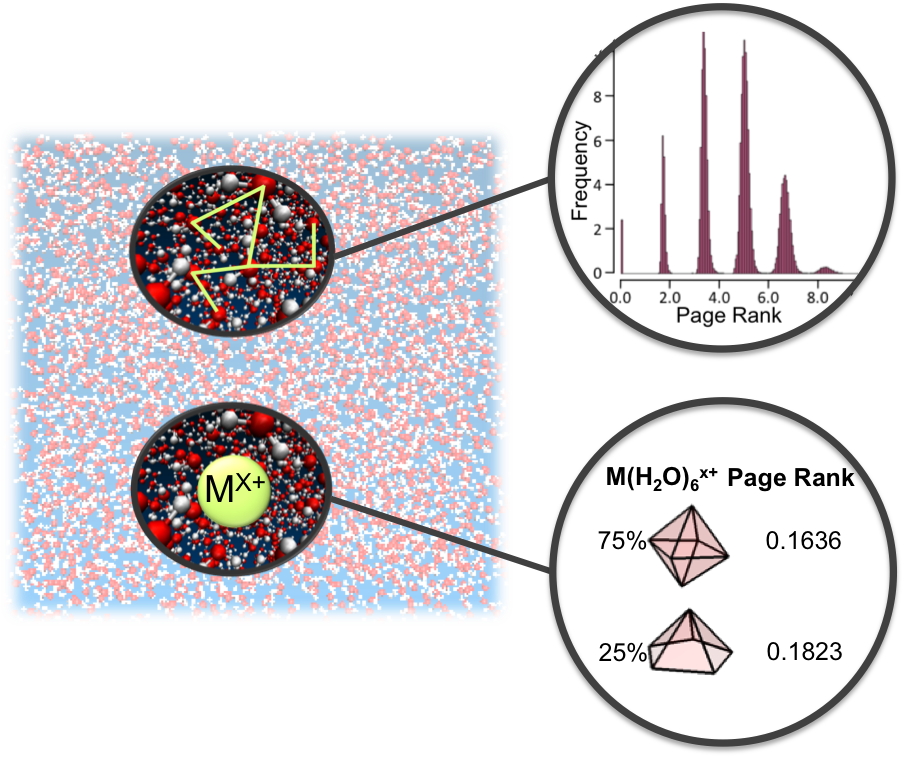Applying Google’s page-rank software to the molecular world
February 15, 2012

Google's PageRank software has been adapted to determine the way molecules are shaped, organized, and combined (credit: WSU)
Aurora Clark, an associate professor of chemistry at Washington State University, has adapted Google’s PageRank software to create molecular networks that scientists can use to determine molecular shapes and chemical reactions without the expense, logistics, and occasional danger of lab experiments.
The software focuses on hydrogen bonds in water, earth’s most abundant solvent and a major player in most every biological process. In living things, water can perform key functions like helping proteins fold or organizing itself around the things it dissolves so molecules stay apart in a fluid state. But the processes are dazzlingly complex, changing in fractions of a second and in myriad possible forms.
Much like the trillion-plus Web domains on the Internet.
Google’s PageRank software uses an algorithm to measure and prioritize the relevance of various Web pages to a user’s search. Clark and her colleagues realized that the interactions between molecules are a lot like links between Web pages. Some links between some molecules will be stronger and more likely than others.
The PageRank algorithm is particularly efficient because it can look at a massive amount of the Web at once. Similarly, it can quickly characterize the interactions of millions of molecules and help researchers predict how various chemicals will react with one another.
Ultimately, researchers can use the software to design drugs, investigate the roles of mis-folded proteins in disease and analyze radioactive pollutants, Clark says.
“Computational chemistry is becoming the third leg in the stool of chemistry,” the other two being experimental and analytical chemistry, says Clark.
Clark, who uses Pacific Northwest National Laboratories supercomputers and a computer cluster on WSU’s Pullman campus, specializes in the remediation and separation of radioactive materials. With computational chemistry and her Google-based software, she says, she “can learn about all those really nasty things without ever touching them.”
Ref.: Barbara Logan Mooney1, L.René Corrales, Aurora E. Clark, Molecular networks: An integrated graph theoretic and data mining tool to explore solvent organization in molecular simulation, Journal of Computational Chemistry, 2012; [DOI:10.1002/jcc.22917]